Varanasi: Exploring India’s sacred ‘city of death’
Varanasi, often called the City of Death, is one of the oldest and most sacred places in India. Along the banks of the Ganges, this mystical city is where life and death exist side by side, with ancient temples, ritual cremations, and spiritual ceremonies defining its essence. Step into the heart of Hindu traditions as we uncover the unique beauty of Varanasi.
Varanasi: the timeless ‘city of death’
Varanasi, also known as Kashi or Banaras, is one of the oldest continuously inhabited cities in the world. Revered as the "City of Death", it is where Hindus believe the soul attains moksha (liberation from the cycle of rebirth) when cremated along the sacred Ganges. Here, life and death are not opposites but part of the same eternal cycle.
The city’s narrow alleyways echo with temple bells, the air is thick with the scent of incense, and the ghats along the river tell stories of faith, devotion, and mortality. Whether you come to seek enlightenment or to witness the rituals of life and death, Varanasi leaves an everlasting impact.
My trip to Varanasi, India
A group of men sing in the distance. The sound comes closer and closer. People step aside, make a passage. Just in time we step aside too, because there they come. The men, who run through the streets singing, and the corpse, which they carry on a stretcher. It is not the last corpse we will see this weekend. We are in Varanasi, the 'city of death'.
Varanasi is the last stop on our journey through India. After three weeks I thought I was used to the hustle and bustle, the stench, the poverty and the constant attention. Varanasi is India squared; it is even dirtier, even busier and even poorer. The fact that it is almost 40℃ during our visit makes it all the more intense.
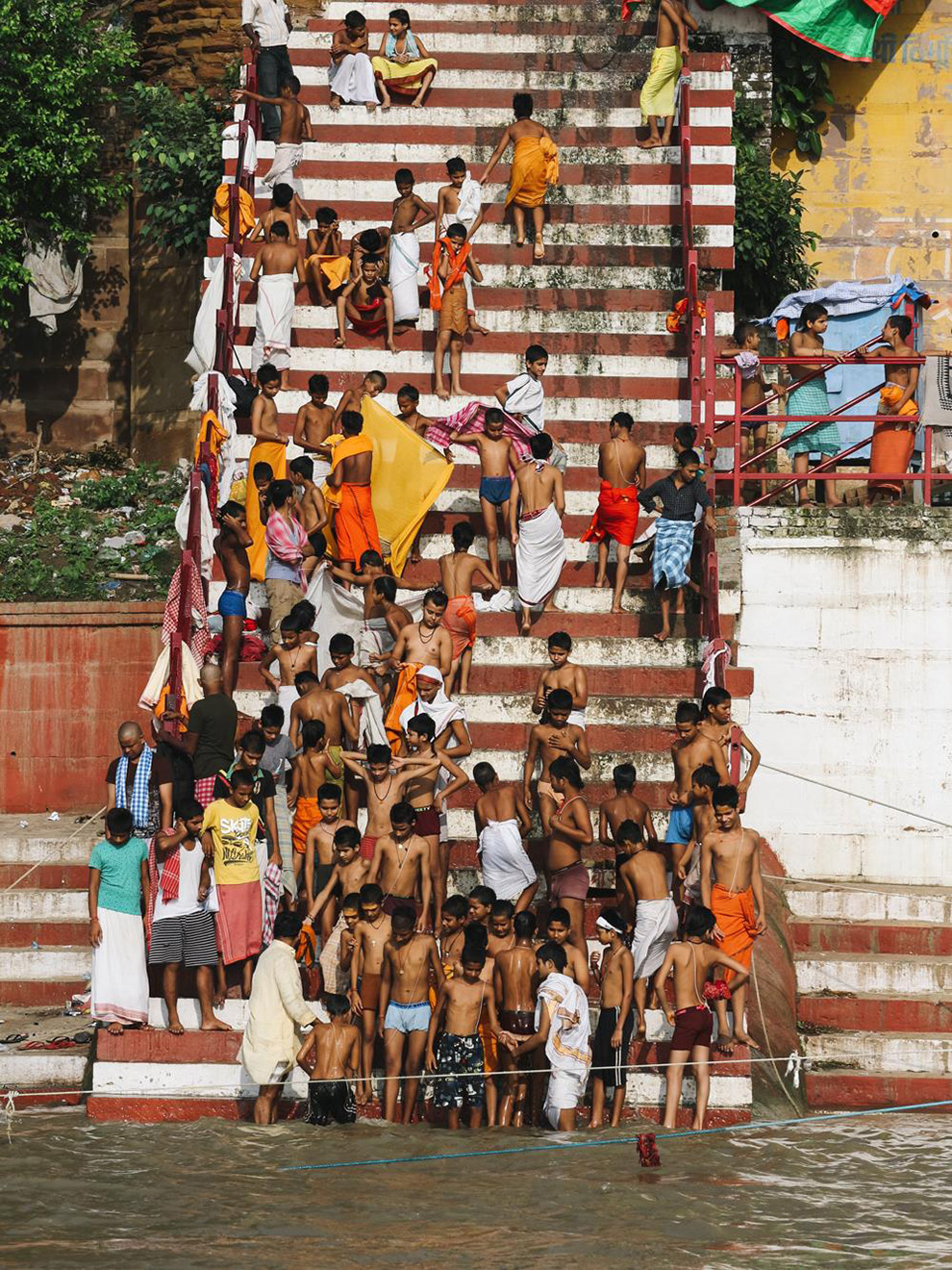
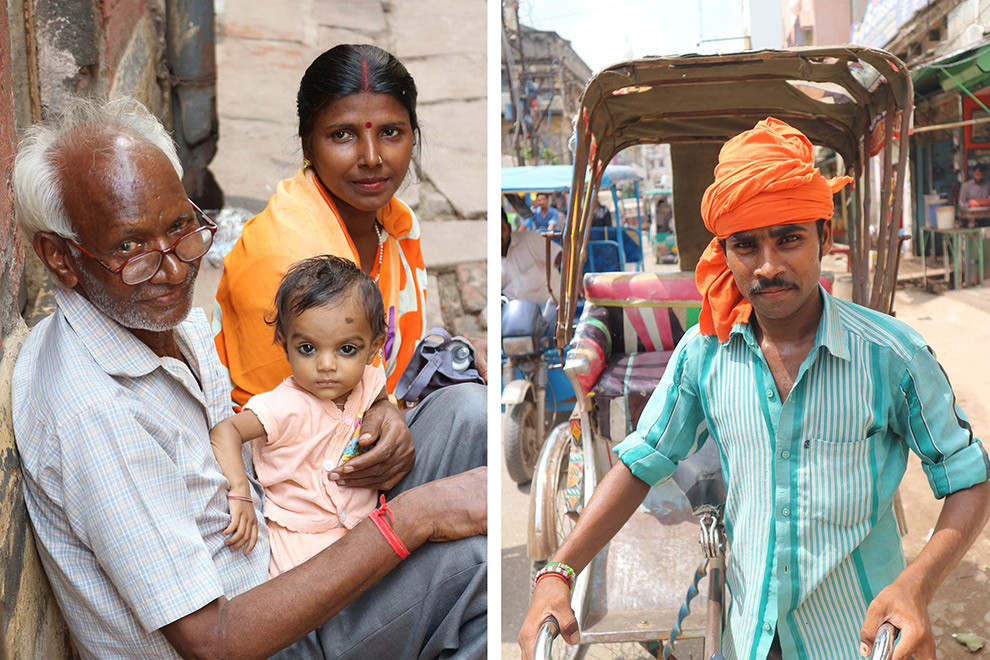 Foto's: Anna Korenromp
Foto's: Anna Korenromp
The city is located on the holy river Ganges, and is known for the many cremations that take place there. The deceased is washed in the Ganges, wrapped in colored cloths, placed on a stretcher and set on fire. People from all over India bring their deceased relatives to Varanasi, and scatter their ashes in the holy Ganges. Hindus in India believe that the soul of the deceased can finally find peace in this way, and can step out of the cycle of reincarnation.
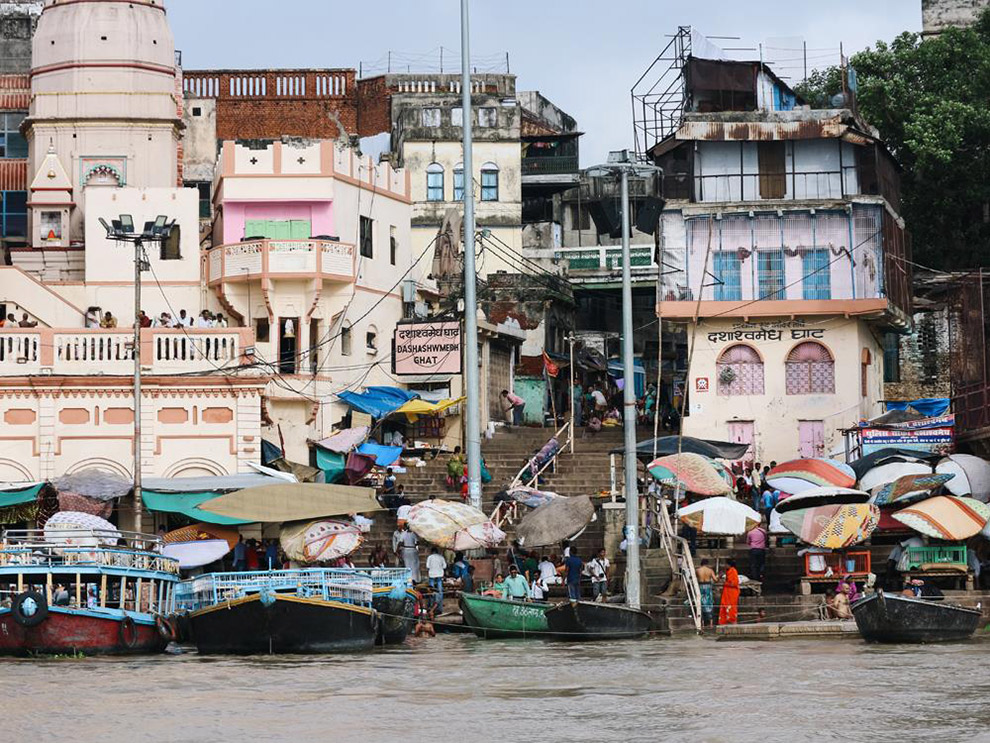 Foto: Anna Korenromp
Foto: Anna Korenromp
Sacred place at Varanasi
Death is everywhere in Varanasi. You can’t avoid it, even if you wanted to. I’ve never seen so many dead people.
The ritual and the thought process are beautiful, but at the same time it’s sad and macabre.
Scattering the ashes of deceased people in a river is a beautiful gesture. Dead children floating in the Ganges because they’re not allowed to be cremated make for a less pleasant sight. But this river, where corpses float, people poop and cows wash themselves, is and remains a holy place. People swim in the water, go under, drink it. Bed sheets from the surrounding hotels are washed in the water. It’s believed that you can’t possibly get sick from the water from the Ganges. It’s even supposed to make you stronger and better. Well, then I’ll just let the opportunity pass me by.
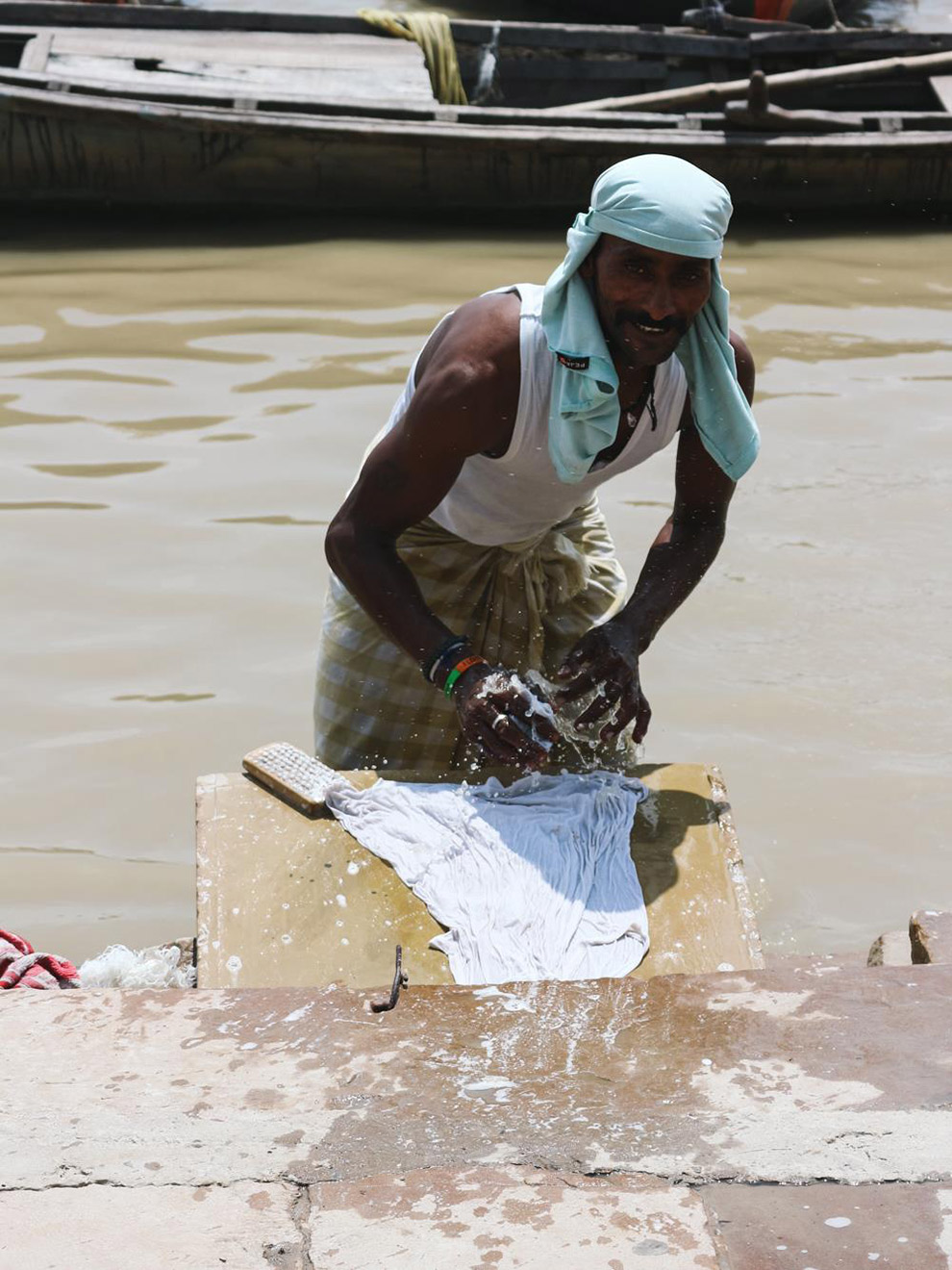 Foto: Anna Korenromp
Foto: Anna Korenromp
A crying woman sits at the water's edge. She does not scream or shout, but sits quietly crying. She is the wife of one of the deceased who are being cremated today. Women are not welcome at the cremation ritual, because they are said to be unable to control their emotions. The eldest son of the family leads the ritual. He shaves his head, except for a small piece of hair. He walks in front while carrying the bier, lights the wood under the body and scatters the ashes on the river. He does all this without emotion, completely controlled. There is little room for emotions in this Burning Ghat, the two hundred cremations that take place here every day are a kind of business, it seems. We almost forget that these are real people, until we see the crying widow sitting at the water's edge.
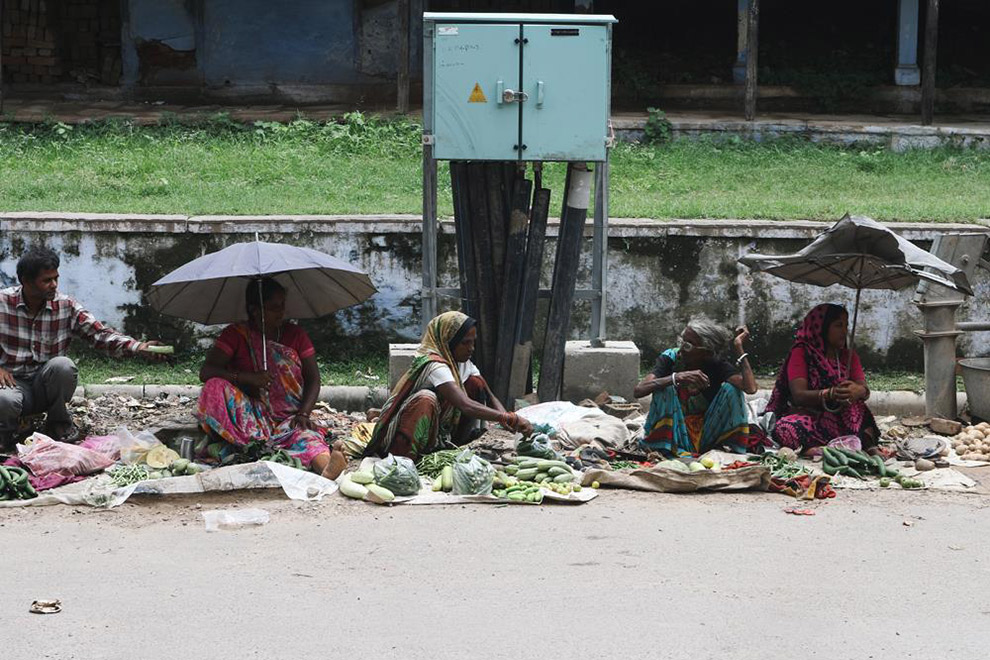 Foto: Anna Korenromp
Foto: Anna Korenromp
Conveyor belt
In the evening we take a boat trip on the Ganges. From the waterfront you can see fires burning everywhere. At that moment, maybe thirty bodies are being burned at the same time. I dare not look over the edge of the boat for fear of a floating and bloated baby corpse. I hold on to the sides of the boat with all my might, just so we don't capsize and end up in the water. Eventually the boat stops at a quay, where hundreds of people have gathered to watch some kind of show. I just want to get off this boat as quickly as possible. Holy river or not, I prefer to keep my distance.
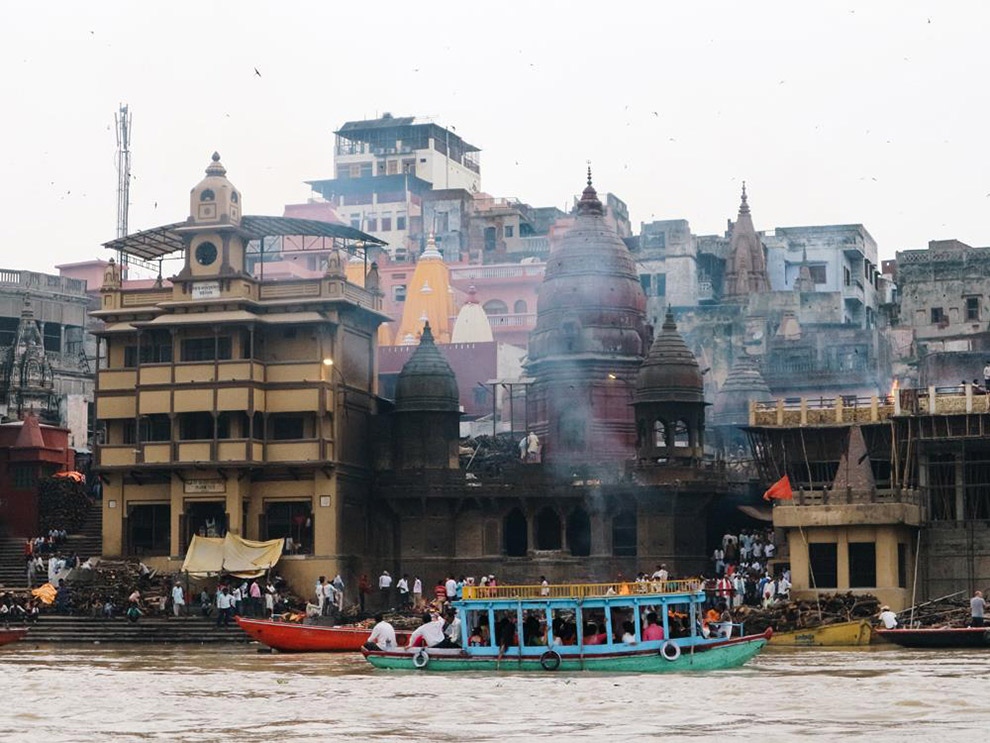 Foto: Anna Korenromp
Foto: Anna Korenromp
The cremations are going on like a conveyor belt, just like the activity in Varanasi. Everywhere we look, we see something special; cows pooping in the street, clothes drying on the banks, shops everywhere, colors, smells, sounds and above all so many people. India is an intense country, Varanasi is more intense. The city of death, I will not forget it quickly.
And Varanasi is not just a city, it is an experience that challenges perceptions of life and death. It is the City of Death, yet full of life. Whether you come seeking spiritual enlightenment, cultural immersion, or simply a deeper understanding of Hindu traditions, Varanasi will stay with you forever.
Check out our Asia page for more travel inspiration!
Create your own blog
Easily add stories to your diary in our online editor or app
Add your images and choose your pages layouts
Share your journey in real time without the fuss!